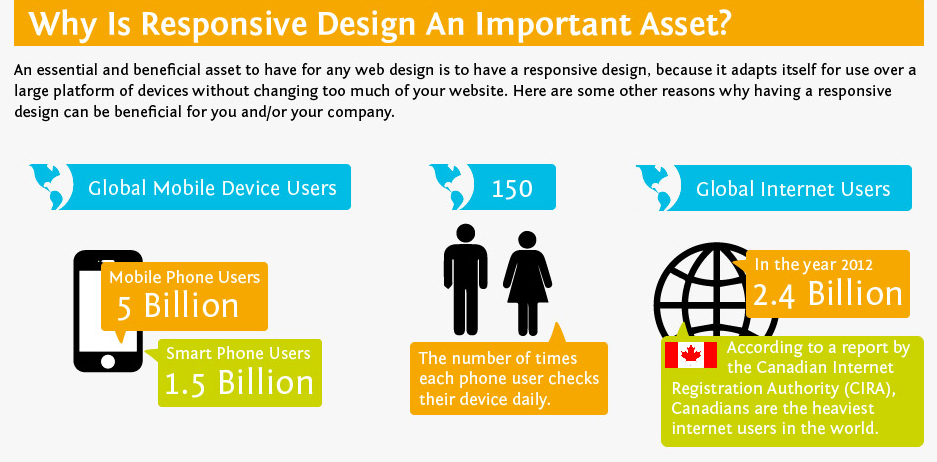5 Key Considerations for Designing a Website for Business Success
In the fast-paced world of digital marketing, keeping up with the ever-changing online landscape is crucial. One aspect that plays a significant role in the success of any online business is the design and functionality of its website. With the constant evolution of user expectations, technology advancements, and emerging design trends, website redesigning has become an essential part of digital marketing strategies. This article explores the importance of website redesigning, including website design, website rebranding, and user experience design.

First and foremost, a website redesign helps to enhance the overall user experience. As online consumers become more discerning, they expect websites to be visually appealing, easy to navigate and provide relevant and engaging content. An outdated website design can lead to a poor user experience, resulting in higher bounce rates and lower conversions. By incorporating modern design principles and user-centered approaches, a website redesign can optimize the user journey, making it more intuitive and enjoyable for visitors.
5 Key Considerations for Designing a Website
In today's digital age, creating a winning website design is crucial for businesses aiming to make a strong online presence. A well-designed website not only attracts and engages users but also converts them into loyal customers. This blog outlines five things that can help you create a winning website design for a successful business, incorporating user-friendly design, web page design ideas, visual design tips, and effective web page designs.
1. Define Your Website's Purpose and Target Audience:
Before diving into the design process, it's essential to define the purpose of your website and identify your target audience. Understanding the goals and needs of your audience will shape the design decisions you make. Whether your website aims to sell products, provide information, or offer services, aligning the design with your audience's preferences and expectations is crucial.
2. Plan and Organize the Website's Structure:
An organized and intuitive website structure is the foundation of a user-friendly design. Start by creating a sitemap that outlines the main pages and their hierarchy. Consider the flow of information and the logical progression from one page to another. Ensure easy navigation and make important information easily accessible, reducing the number of clicks required to find the desired content.3. Pay Attention to Visual Design Elements:
Visual design plays a significant role in capturing users' attention and conveying your brand message effectively. Start with a visually appealing color scheme that reflects your brand's personality and evokes the desired emotions. Select fonts that are easy to read and maintain consistency across the website. Incorporate eye-catching images and videos that are relevant to your content and enhance the overall user experience.
4. Focus on User Experience (UX) Design:
5. Test, Iterate, and Optimize:
Once your website design is implemented, it's crucial to continually test, iterate, and optimize it based on user feedback and analytics data. Monitor user behavior, conversion rates, and bounce rates to identify areas for improvement. Use tools like heatmaps and A/B testing to understand user interactions and preferences. Regularly update and refresh your website's content and design to keep it engaging and relevant.
Getting the Best Results with the Right Platform & Tools
In today's digital landscape, having the right platform and tools is essential for achieving the best results in website development. With the multitude of options available, it's important to choose a responsive web design platform and leverage effective website creation tools and platforms. This article explores the importance of selecting the right platform and tools, focusing on responsive web design platforms and website creation tools.
Responsive Web Design Platform:
A responsive web design platform is crucial for creating websites that adapt seamlessly to different devices and screen sizes. With the increasing use of smartphones and tablets, it's vital to ensure your website provides an optimal user experience across all devices. Responsive web design platforms allow you to build websites that automatically adjust their layout and content based on the screen size, resulting in improved user engagement and satisfaction.
When choosing a responsive web design platform, consider factors such as flexibility, ease of use, and available templates and themes. Look for platforms that offer intuitive drag-and-drop functionality, customizable design options, and responsive design features. Popular responsive web design platforms include WordPress, Wix, and Squarespace.
Website Creation Tools and Platforms:
In addition to a responsive web design platform, utilizing effective website creation tools and platforms can significantly enhance the development process and overall website performance. These tools offer a wide range of functionalities, empowering you to create visually appealing, interactive, and feature-rich websites.
Website creation tools often include features like a visual editor, pre-designed templates, and widgets for adding elements such as forms, galleries, and sliders. Some platforms also offer advanced features like e-commerce integration, SEO optimization, and analytics tracking. Depending on your specific requirements, you can choose from a variety of website creation tools and platforms, including Shopify, Joomla, and Magento.
When selecting website creation tools and platforms, consider factors such as scalability, security, integration capabilities, and community support. Evaluate the available features and ensure they align with your website goals and business needs.
By utilizing responsive web design platforms and effective website creation tools and platforms, you can streamline the website development process, create visually appealing designs, and provide optimal user experiences. These tools empower you to build websites that are responsive, customizable, and equipped with the necessary features to engage and convert visitors effectively.
Conclusion: Website redesigning is an integral part of digital marketing strategies. It not only enhances the user experience but also improves search engine visibility, aligns with evolving brand identities, and keeps businesses competitive. Investing in a website redesign ensures that your online presence remains relevant, engaging, and effective in reaching your target audience. With the ever-changing digital landscape, staying ahead through website redesigning is essential for long-term success.
Frequently Asked Question
1. How often should I consider redesigning my website?
The frequency of website redesigns depends on various factors such as changes in technology, shifts in user preferences, updates in branding, and evolving business goals. Generally, it's recommended to reassess your website's design every 2-3 years to ensure it remains fresh, relevant, and aligned with your objectives.
2. Can I update my website gradually, or is a complete redesign necessary?
It's possible to update your website gradually by making incremental changes over time. This approach allows you to prioritize improvements based on immediate needs, budget constraints, and resource availability. However, if your website requires extensive changes to its structure, functionality, or visual design, a complete redesign might be more efficient and effective.
3. How can I ensure that my redesigned website attracts more traffic and leads to better conversions?
To attract more traffic and improve conversions, focus on implementing effective digital marketing strategies alongside your website redesign. This may include optimizing your website for search engines (SEO), creating high-quality content, leveraging social media channels, and running targeted advertising campaigns. Additionally, continuously monitor website analytics to identify areas for improvement and refine your marketing efforts accordingly.
Related to this
Let's Discuss Your Project











